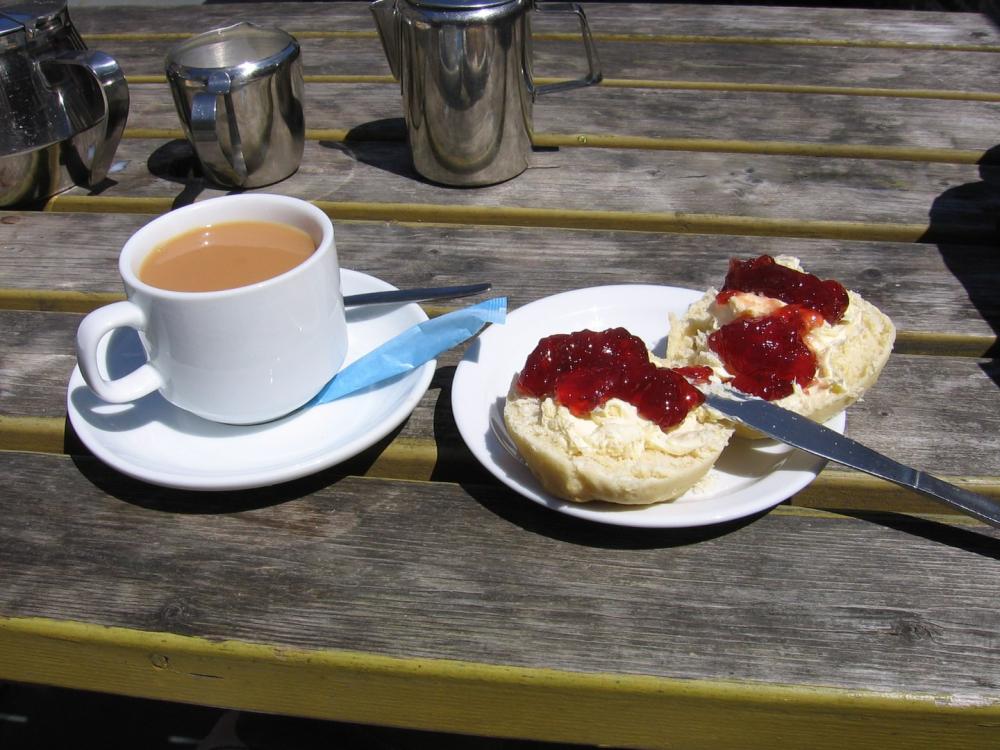7a - A Question of Priorities - Cream Teas
There are two types of “cream tea”; one from Devon(shire) and the other from Cornwall, adjacent counties in south-west England. There are crucially important differences between the two.
Cream Tea - Scones, Clotted Cream and Strawberry Jam
Devon or Devonshire Cream Teas consist of scones which are sliced horizontally in half, then spread with clotted cream and strawberry jam, served with a cup of tea.
Cornish Cream Teas consist of scones which are sliced horizontally in half, then spread with clotted cream and strawberry jam, served with a cup of tea.
Clear?
No?
Well, the difference lies in which do you spread first, the cream or jam?
Devon favours first topping your scones with cream (no butter is used) then adding the jam on top of the cream.
Cream Tea in the Devon Way
Cornwall favours first topping your scones with jam (no butter is used) then adding the cream on top of the jam.
Get this wrong and you will live forever in ignominy.
In fact, people in both counties use either method. I prefer the Devon way except for when I prefer the Cornish way. The image above of the Devon way was actually taken in Cornwall!
Although these teas are now served as part of “afternoon teas” as described above, they are more traditionally served on their own – scones, cream and strawberry jam; no sandwiches or other items. This is how they are served in the relevant counties to this day.
So, I hear you ask, “what is clotted cream?” Fans of Tolkien’s Lord of the Rings should know – it’s one of the Hobbit’s staple foods.
Cow’s milk is heated indirectly by steam, then left to cool causing the cream content to float to the top in clots (or clouts). This is skimmed off and left to drain. It then forms a crust on top. Cornwall clotted cream has Protected Designation of Origin (PDO) status within the EU.
Clotted Cream
Clotted cream is made in other counties of south-west England and elsewhere and cream teas are served all over the UK, but Devon and Cornwall serve the cream of cream teas.
It is unclear which county came up with clotted cream (or cream teas) first, but whichever, it was certainly a long time ago that clotted cream arrived. The English poet, Edmund Spenser, a contemporary of Shakespeare mention it in his poem, The Shepheardes Calender, published in 1579, but written earlier.
QuoteNe would she scorn the simple shepherd swain,
For she would call him often heam,
And give him curds and clouted cream.
Edmund Spencer
This dish I really do recommend.
Image Credits
Cream Tea - Scones, Clotted Cream and Strawberry Jam - by Liyster; Licenced under CC BY 3.0
Cream Tea in the Devon Way - by Tuxraider; Licenced under CC BY 3.0
Clotted Cream - by Biggishben - Licenced under CC BY-SA 3.0





